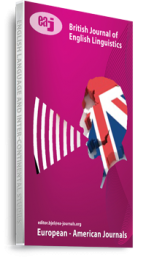Tackling the renewal of religious discourse (RD) is beyond the scope of the present research. So, the study deals with an important and vital area of religious discourse, namely the exegetic legacy. So, it addresses the interpretation of the forms of Az–Zann (i.e., the linguistic units which convey the meaning of conjecture) in the Qur’an. These forms are mentioned sixty-nine times in the Qur’an which are divided into two groups according to their meanings: (a) fifty forms with a salient meaning and (b) the other nineteen forms have a pragmatic meaning. As for the present study, it provides an analysis for the fifty cases. The other nineteen cases will be dealt with in another paper. The present paper aims at providing an authentic interpretation of the linguistic units under analysis. It makes an evaluation of the earlier scholars’ interpretation of the forms of conjecture checking their exegetic explanation to know whether it reflects the authentic meaning or not. (b) At the same time, it evaluates the claim of modernists regarding the relative truth of faith. In addition, it addresses their claim that faith is based on indeterminant proofs as well as determinant ones. Meeting the goals above helps in providing an answer for the general objective of the study of proving that religious discourse needs renewal or not. The study starts with scoping the fundamental reasons for conducting the study, providing a general background on the main schools of traditionalism, modernism, and reformism. In conclusion, the study finds that none of the cases has to do with faith. The interpretation given by the exegetes agrees with the established religious discourse except a few cases. On the contrary, the findings do not support the claim of modernists. Above all, the forms of conjecture are used for developing different discourses as demonstrated in the sections below.
Keywords: Az-Zann, Interpretation, absolute faith, reformism, relative faith, religious discourse, salience meaning

